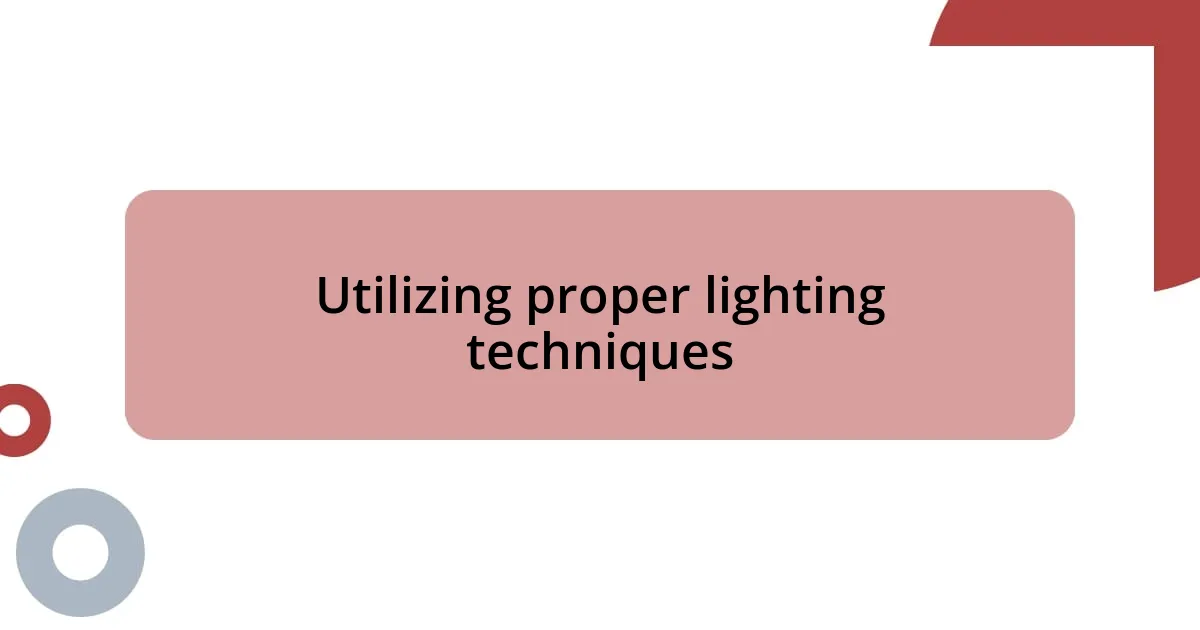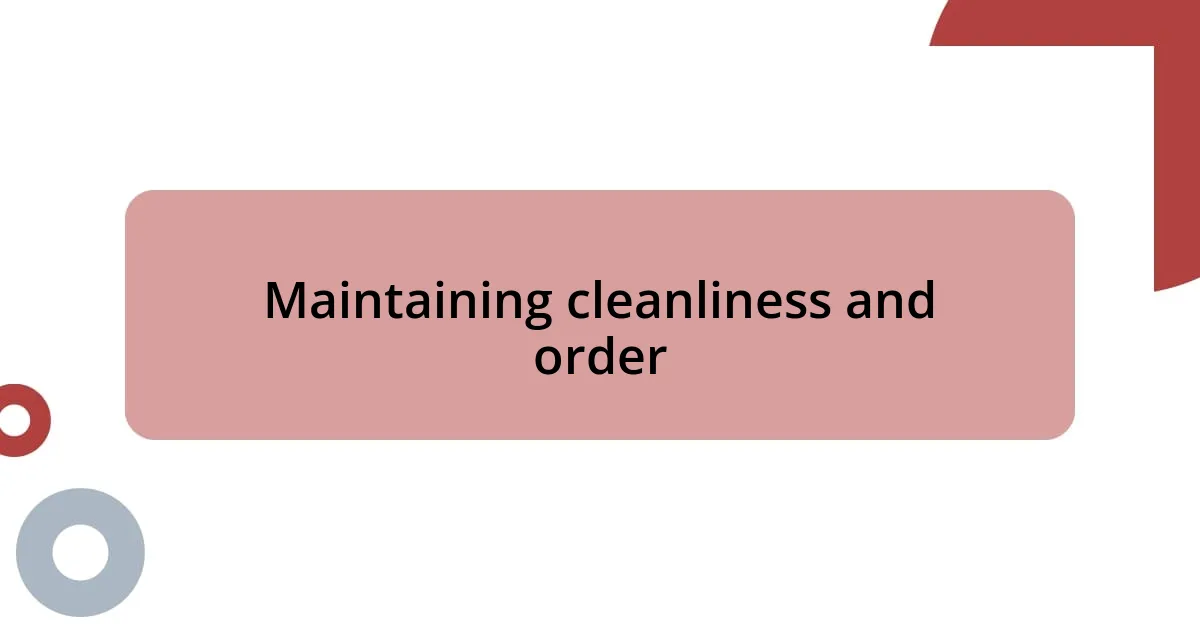Key takeaways:
- Assess workspace safety by identifying hazards and involving team members for collective solutions.
- Implement ergonomic solutions, such as adjustable desks and proper monitor positioning, to enhance comfort and productivity.
- Maintain a clean and organized workspace to reduce distractions and improve mental clarity.
- Establish a safety culture by encouraging open discussions and regular training sessions among team members.

Assessing workspace safety risks
Assessing workspace safety risks begins with a keen awareness of your environment. I remember the first time I walked into a new office; I noticed how cluttered the walkways were. It made me wonder, how many people tripped or fell because of something that could have easily been organized?
As I evaluate potential hazards, I always make a checklist. This not only helps me cover all my bases but also allows me to cross off risks as I mitigate them. For instance, I once discovered that the electrical cords were dangerously close to a wet area—a clear safety issue. Taking quick action not only protected me but also created a more secure environment for my colleagues.
It’s essential to involve everyone in the assessment process, too. Have you ever asked your team about their worries regarding workspace safety? This simple act not only promotes a culture of safety but often uncovers issues I hadn’t even considered. As I’ve learned, collaboration often leads to innovative solutions that make the workspace safer for all.

Implementing ergonomic solutions
When considering ergonomic solutions, I’ve found that the little adjustments often yield the most significant benefits. For example, I once switched my regular chair for an ergonomic model with lumbar support. Almost instantly, I felt a reduction in back pain during long hours of work. It’s fascinating how something seemingly simple can transform your comfort and productivity.
Here are some effective ergonomic solutions to consider:
- Adjustable Desk: Switching between sitting and standing can provide relief throughout the day and help maintain energy levels.
- Keyboard and Mouse Placement: Ensuring these are at elbow height reduces strain and promotes better posture.
- Monitor Positioning: My experience taught me that positioning the monitor at eye level greatly reduced eye strain and neck discomfort.
- Footrests: Using a footrest can support proper sitting posture and improve circulation.
- Frequent Breaks: I set timers for short breaks to stretch or walk. It’s incredible how small intervals of movement can refresh the mind and body.
These solutions not only address physical comfort but also foster a healthier work mindset. It’s remarkable how investing a bit in ergonomics translates to long-term wellness and productivity in the workspace.

Organizing workspace efficiently
Organizing my workspace efficiently has been a game-changer in enhancing my focus and productivity. I vividly remember a time when my desk was a chaotic mix of files, snacks, and random office supplies. It felt overwhelming, and I often struggled to find what I needed. After a good declutter, I categorized my items into designated zones. I discovered that just having a clear area for my documents and another for my tech gadgets created a sense of calm. Every item now has its own place, and it truly makes a difference in how I approach my tasks each day.
Incorporating storage solutions was another step that transformed my workspace. I invested in tiered organizers that allowed me to elevate my supplies within easy reach while keeping my desk surface clear. When I look back at my cluttered space, I feel a sense of relief knowing that I took the initiative to create an environment that fosters creativity and focus. I even found that my stress levels decreased; an organized workspace genuinely affects mental clarity. Seeing everything neatly arranged makes me more motivated to dive into my workload.
As I strive to maintain this organized space, I continuously assess my setup. I ask myself, “Is this system still working for me?” and adjust as needed. Just last week, I swapped out a large filing cabinet for a slim rolling cart. This decision freed up floor space and created a more open atmosphere. Have you ever made a small tweak that surprisingly had a significant impact? I encourage you to try it; you might just find a new level of efficiency in your daily routine.
| Organizing Method | Description |
|---|---|
| Zones | Designate specific areas for different types of items (e.g., documents, tech gadgets, personal items) to enhance focus. |
| Storage Solutions | Use organizers and shelving to maximize vertical space and keep items off your desk. |
| Continuous Assessment | Regularly evaluate your workspace organization and make adjustments based on what works best for you. |

Utilizing proper lighting techniques
Utilizing proper lighting techniques can dramatically change the mood and functionality of your workspace. I once switched to adjustable LED desk lamps with different color temperatures. On brighter days, I felt the cool white light invigorated my focus, whereas the warmer tones in the evenings created a cozy, comfortable environment. Isn’t it interesting how changing the light can alter your energy levels and mindset?
Moreover, I learned that layering light sources—combining ambient, task, and accent lighting—can enhance not just the brightness but also the aesthetic of my workspace. For instance, I strategically placed a lamp in a corner to brighten up darker areas without causing glare on my computer screen. The softer light made a drastic difference in reducing eye strain and improving my immersion in the work at hand. Have you noticed how the right lighting can inspire your creativity?
I’ve also found that utilizing natural light is one of the best ways to create an uplifting atmosphere. Since my workspace has a window, I try to position my desk to take full advantage of that glorious sunlight. Some days, I just lean back and enjoy the sun streaming in, feeling my mood lift almost instantly. How often do we underestimate the power of natural light in boosting our overall well-being? I encourage you to assess your lighting situation, as it can truly elevate your workspace environment for the better.

Maintaining cleanliness and order
Maintaining cleanliness and order is something I’ve learned to prioritize over time. There was a period when I neglected to tidy my desk regularly, and it became a magnet for distractions. I still remember feeling a rush of anxiety every time I sat down to work, confronted with papers strewn everywhere. Now, I make it a habit to spend just a few minutes at the end of each day clearing off my workspace. It’s surprising how that small daily commitment can drastically shift my mindset for the next day.
Beyond just tidiness, I’ve found that having a clean environment enhances not just my focus but my creativity as well. One Saturday, I decided to rearrange my desk completely, and as I cleared each item, it felt like I was unloading more than just physical clutter. I took a moment to reflect on what I truly needed, and even chucked some old notebooks that I hadn’t looked at in ages. Isn’t it liberating to part with things that no longer serve you? Since then, every time I sit down at my newly organized desk, I feel inspired rather than overwhelmed.
I also believe in the power of a quick decluttering session throughout the week. Whenever I notice items accumulating—a cup from lunch or documents out of place—I take a moment to put them back where they belong. This simple practice keeps chaos at bay and reinforces that sense of order I’ve worked hard to create. Have you ever experienced that satisfying feeling of tidiness washing over you? It’s as if every surface celebrates the clarity, paving the way for fresh ideas to flow.

Regular safety equipment checks
Regular safety equipment checks are crucial for ensuring a secure workspace. I remember a time when I overlooked this routine; my fire extinguisher sat in a corner, gathering dust for months. When I finally checked it, I was shocked to discover it had expired. That unsettling realization taught me that safety checks should never be on the back burner—they’re a vital responsibility.
During my safety inspections, I make it a point to thoroughly examine equipment like gloves, goggles, and first aid kits. I often think back to a day when I found a pair of gloves with holes in them, which could have led to a dangerous situation. Now, I regularly replace worn-out equipment and keep spare safety gear within easy reach. Isn’t it empowering to know you’re taking proactive steps to protect yourself?
I like to set aside time each month for these checks, treating them like an essential meeting on my calendar. It’s not just a box to tick off—it’s a moment to reflect on how prepared I am for unexpected issues. After all, wouldn’t you feel more at ease knowing everything is in top shape? Dedicating that time means I can focus on my work rather than worrying about the “what-ifs.”

Encouraging a safety culture
Creating a safety culture in the workplace is all about nurturing an environment where everyone feels responsible for safety. I vividly recall a brainstorming session where we collectively came up with our safety mantra: “Safety is everyone’s job.” It was energizing to see team members actively engaging in discussions about safety practices. How often do we get to feel collectively empowered? That day reminded me that when safety becomes a shared value, it fosters a sense of belonging and cooperation.
I also encourage open conversations about safety, making it a topic that can be discussed without hesitation. There was a moment when a colleague voiced concern about the clutter in our common area. Instead of brushing it off, we all rallied together to clean and organize. Not only did we improve our environment, but we built trust among each other. Isn’t it amazing how a simple act of speaking up can lead to positive change?
Training sessions play a vital role in reinforcing this culture of safety. I’ve participated in a few, and I remember feeling a surge of confidence after learning proper emergency procedures. It wasn’t just about memorizing steps; it was about preparing myself mentally for real situations. Have you ever felt that rush of readiness? Incorporating regular, engaging training helps everyone stay informed and prepared, creating a proactive rather than reactive approach to workplace safety.














